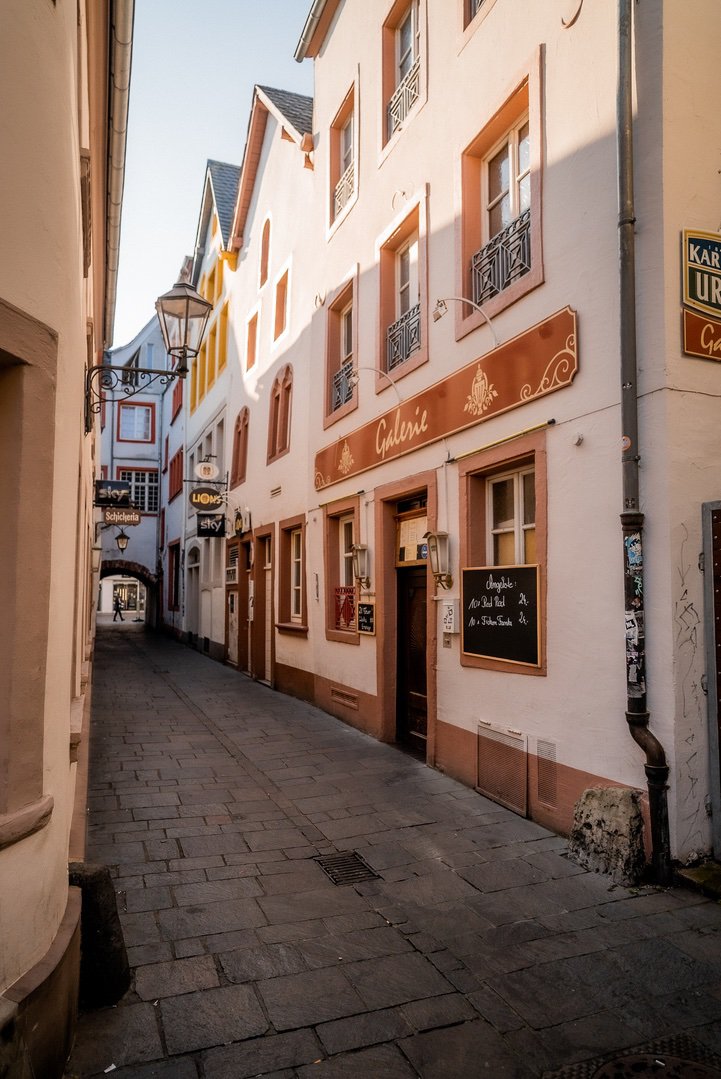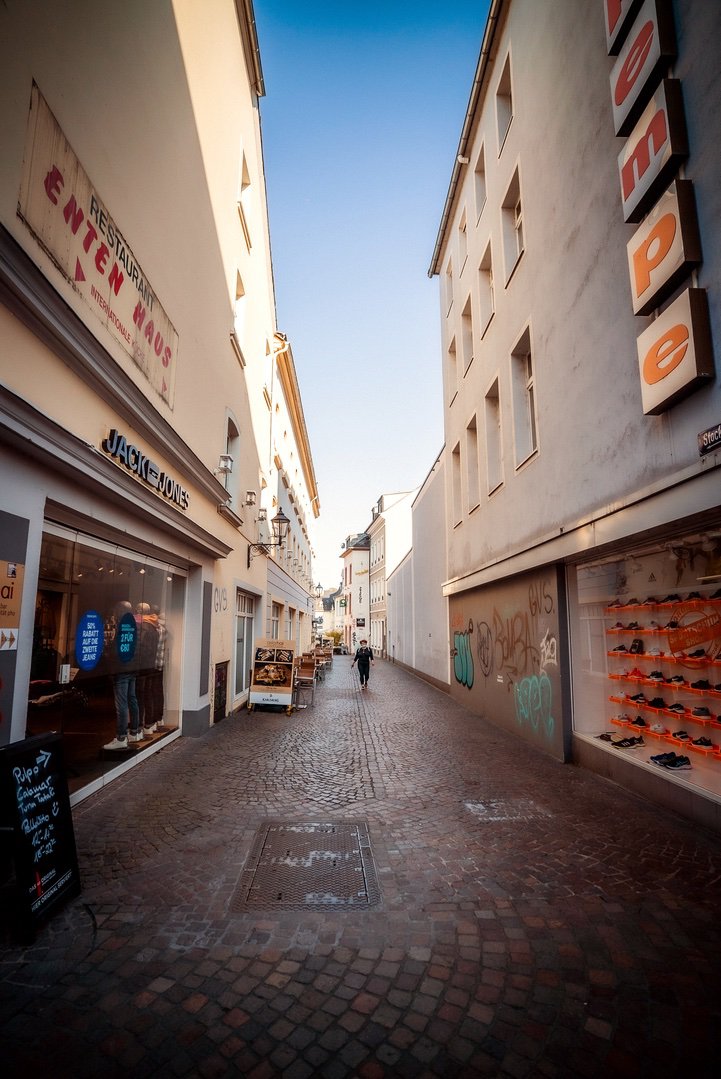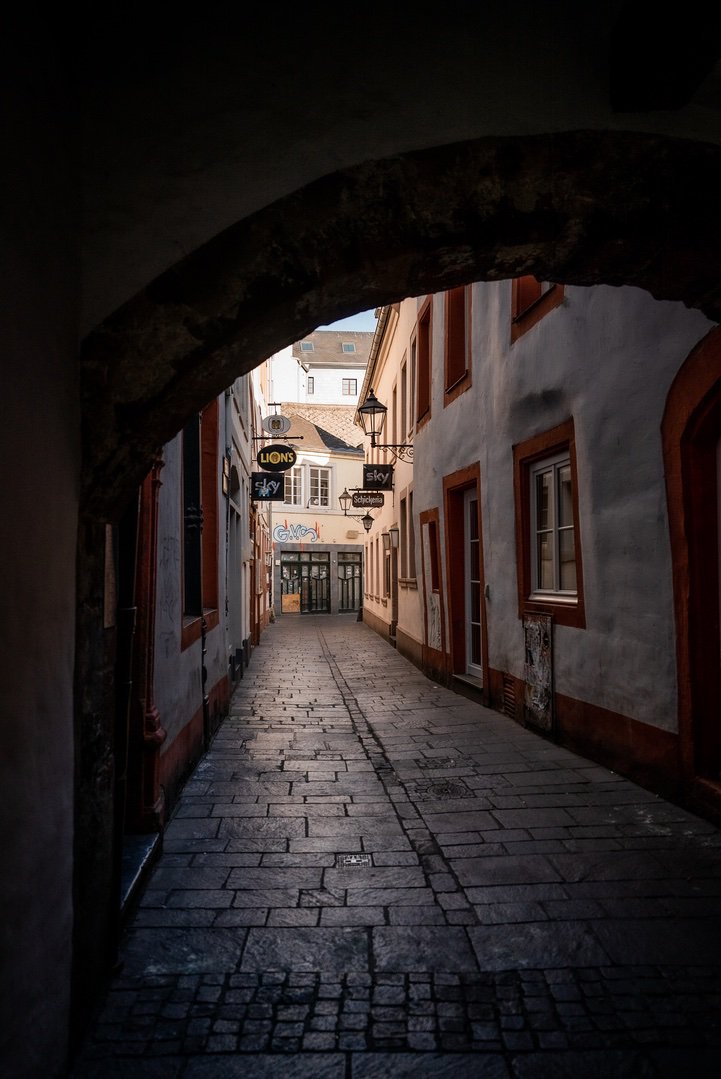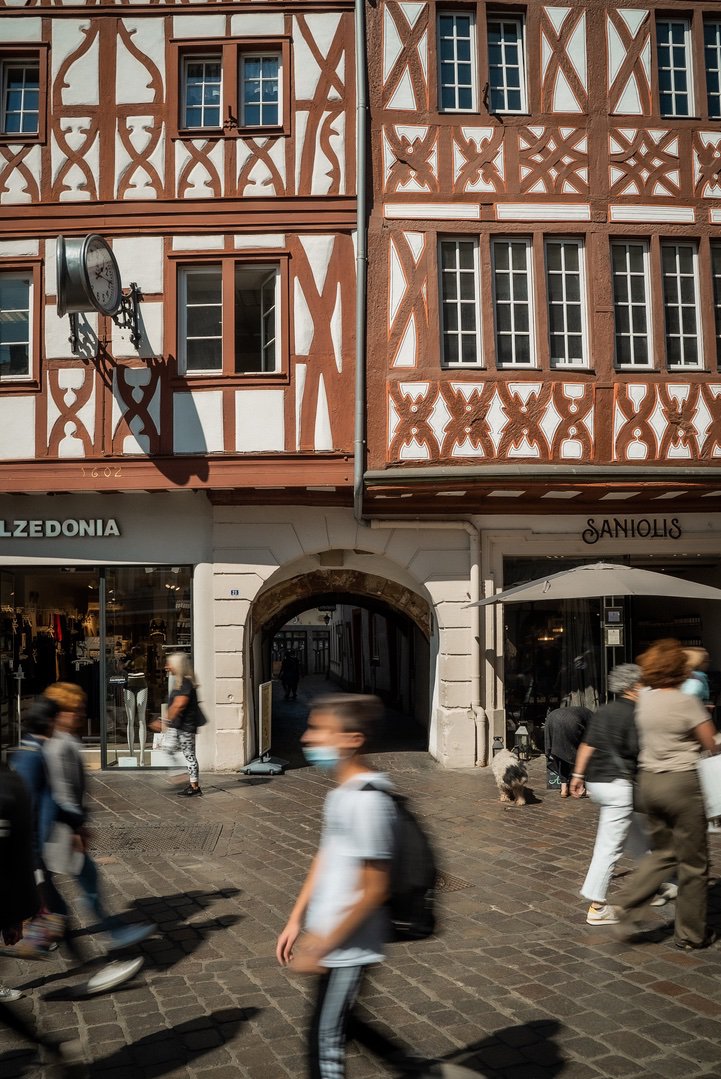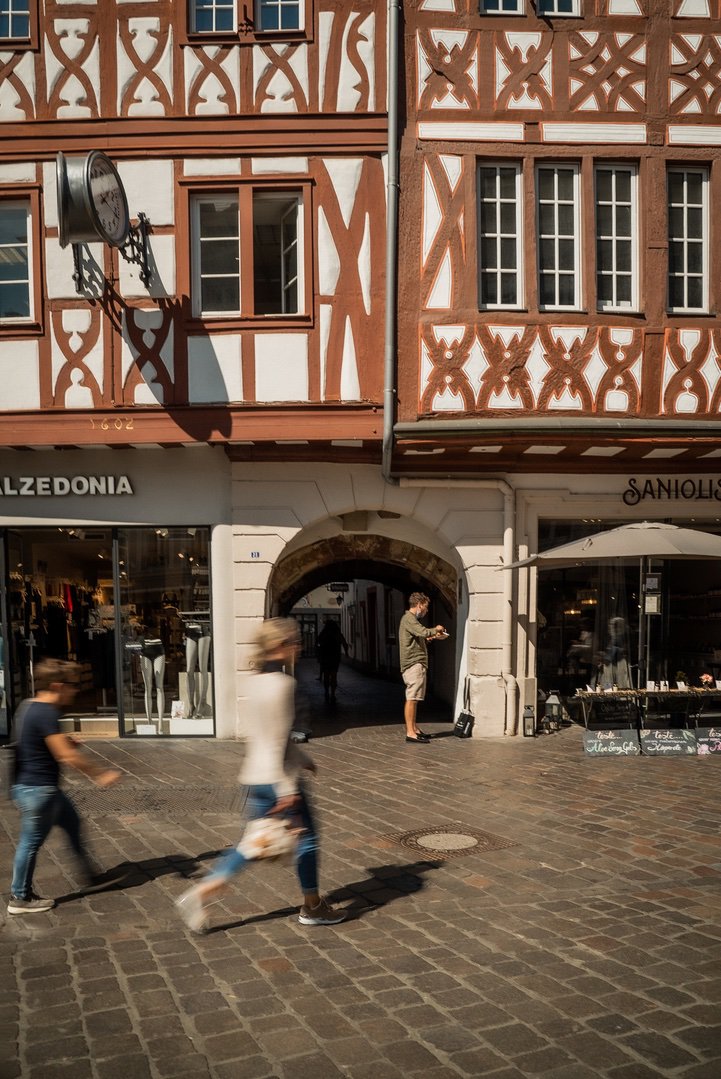Jewish Quarter
In the Middle Ages, the Jewish quarter stretched between Hauptmarkt, Jakobsgasse and Stockstraße. It was initially accessible via four gates, and from 1338 onwards was opened up by three gates following a contract between the archbishop and the municipality. One gate was at the end of Judengasse, the Kleine Judenpforte, and in Stockgasse was the Große Judenpforte, which today no longer exists, nor does the Untere Pforte in Jakobsgasse. About 300 people lived in the densely built medieval Jewish quarter.
In 1235, four Jewish families built four residential houses in what is now Judengasse, one of which is still partly preserved at number 2. In the cellar is the oldest room with a groined vault, above it a house considerably rebuilt in 1311 with the typical features of a Gothic Trier burgher's house: gabled façade, windows with blind arches and two entrances to the cellar and the residential house. On the north side of the alley there were also residential houses and behind them the Great Jews' Square with a men's synagogue and a women's synagogue, whereby the men's synagogue is already mentioned in writing in the 11th century. Furthermore, there was the so-called Tanzhaus (Dance House), where, in addition to weddings, ritual celebrations for the community in Trier and the Jews from the surrounding area took place. Near the men's synagogue there was also the hospital and, opposite the Großer Judenplatz, a mikvah for ritual physical and spiritual ablutions. The mikvah at the end of today's Judengasse is probably preserved in the cellar of the building that is still standing. It is a large room, also covered with a groined vault, from which another room is accessed - further investigations are still pending. In the Middle Ages, several multi-storey gabled houses, in which several Jewish families also lived, stood on today's open Stockplatz, which opens onto Jakobsgasse. These houses were surrounded by Hintere Judengasse and were still there until the 19th century. After the pogrom in 1349, only a few Jewish families lived in the town, including Master Symon, physician to the archbishop, who lived in the house at Judengasse 2. At the beginning of the 15th century, the Jews were expelled from Trier.
Author: Dr. Marzena Kessler
Editorial staff: Prof. Dr. Frank G. Hirschmann
